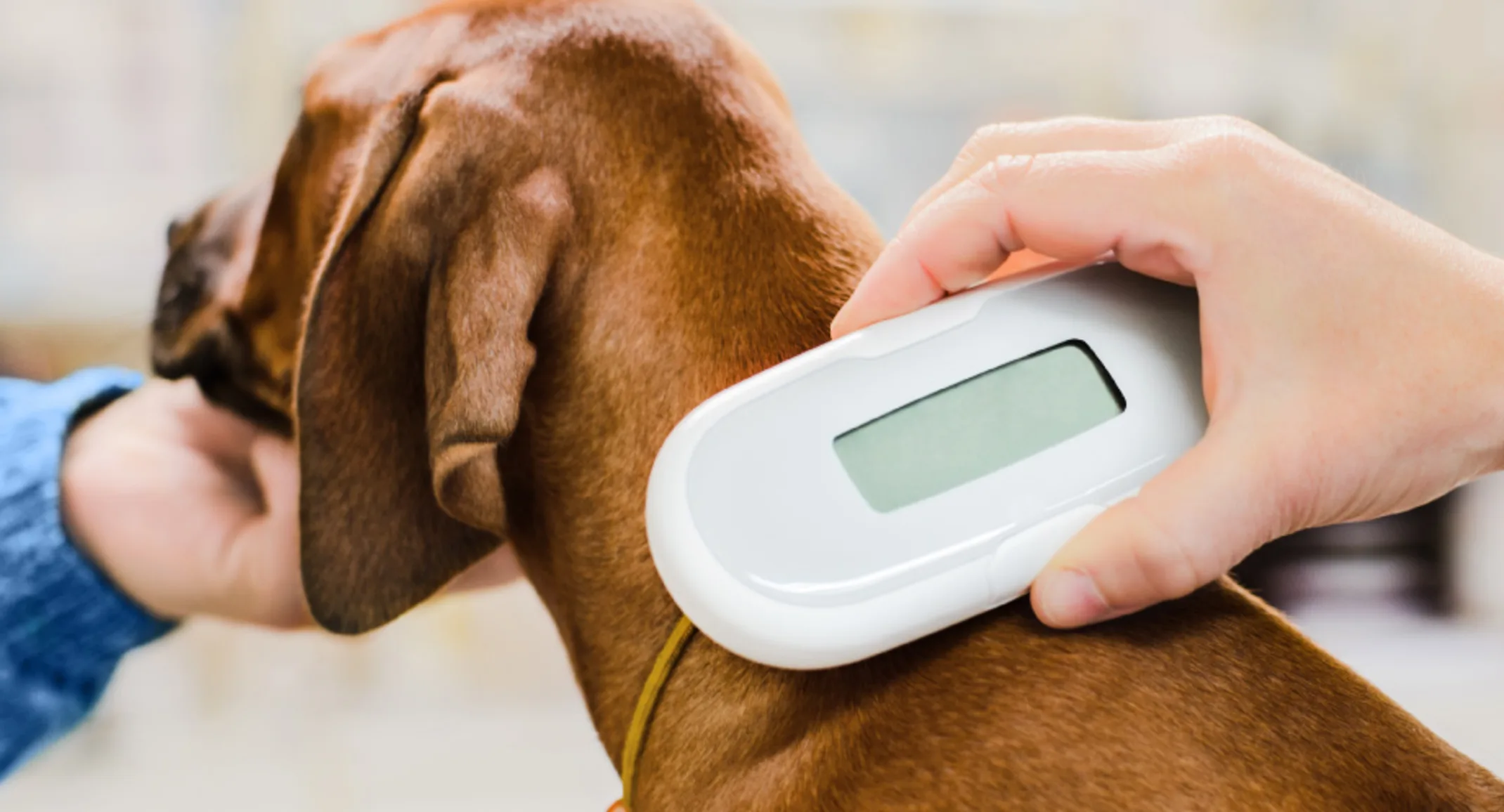Space Age Technology? Pet Microchipping
For Pet Owners

May 4, 2022 by Hanford Veterinary Hospital
Pet microchipping has been around for quite a while, but it still holds an air of mystery for many. How does it work? What are the risks? Is it something I should consider for my furry family? Hanford Veterinary Hospital is here to answer all your burning questions about pet microchipping:
All About Microchips
While pet microchipping may sound like pretty advanced technology, in truth it is a pretty basic concept and far from space age!
The microchips that we implant in our pets are a small, electronic chips enclosed in an inert glass cylinder. They are typically about the size of a grain of rice. The microchip is inserted under the skin using a hypodermic needle, similar to an injection for a vaccine.
Microchips do not have their own source of energy and, contrary to popular belief, do not emit any kind of signal. Instead, when a special scanner is passed over the microchip, its radiowaves are able to activate the chip so that a special serial code is displayed.
This serial code is attached to an entry in a public database that associates your pet with your specific contact information.
Considering Pet Microchipping for Your Family
Our staff considers pet microchipping a routine and important part of pet wellness care. When thinking about microchipping your pets, consider that:
Microchip insertion is no more painful than a typical shot injection and can be done at the time of other general anesthetic procedure such as spay/neuter
Microchips are inert and do not cause a reaction or irritation
There is no radiation or GPS signal emitted that might cause a health or privacy concern
Microchips typically last longer than the lifespan of the pet
Microchips can help you reunite with your pet should you become separated (over half of dogs with microchips make it home versus 22% without, and 38.5% of cats with microchips versus 1.8% without)
Microchips are not perfect, though. It does fall on your shoulders as your pet’s caregiver to be sure that the microchip registration is active and your contact information up to date.
At this point in time, microchipping cats and dogs is pretty standard practice and virtually without risk. If you could do something to dramatically increase the odds of finding your pet after an unfortunate separation, wouldn’t you do it?
If you would like to have your pet microchipped or need help finding out whether your pet’s chip is up to date, please contact us so that we can help. Pet microchipping is not nearly as intimidating as it might sound and is an easy thing to do to help your pet stay with you longer.
